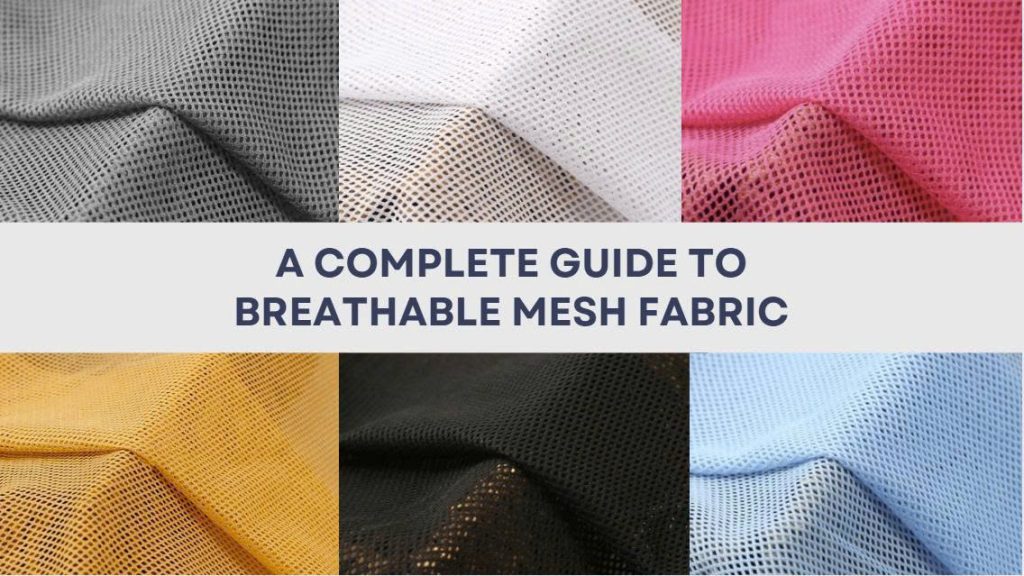Blog
A Complete Guide to Breathable Mesh Fabric
Introduction
Breathable mesh fabric is transforming the textile industry, combining functionality, comfort, and modern design. With its exceptional ventilation and lightweight feel, this fabric is widely used in sportswear, outdoor gear, medical textiles, and fashion. But what makes breathable mesh fabric stand out? And why are garment manufacturers, textile wholesalers, and activewear brands embracing it as a core material?
This guide delves into the properties, applications, and advantages of breathable mesh fabric, helping industry professionals harness its full potential.
Key Properties of Breathable Mesh Fabric
1. Excellent Breathability
The hallmark of breathable mesh fabric is its open-weave structure, allowing superior airflow. This keeps wearers cool and reduces heat buildup—an essential feature in activewear, uniforms, and outdoor clothing.
2. Lightweight Construction
Despite its durability, breathable mesh is incredibly light. This characteristic ensures comfort, freedom of movement, and reduced fatigue, making it a favorite for performance-focused apparel like sports jerseys and gym wear.
3. Strength and Durability
Breathable mesh is designed to endure demanding conditions. Synthetic fibers such as polyester and nylon reinforce the fabric, making it resistant to wear, stretching, and environmental stress.
4. Moisture-Wicking
The moisture-wicking property actively draws sweat away from the skin, ensuring dryness and comfort. This makes breathable mesh a preferred choice for high-performance athletic and work garments.
Applications of Breathable Mesh Fabric
1. Sportswear
From running shirts to training shorts, breathable mesh enhances athletic performance by promoting ventilation and managing moisture. It’s also used in dancewear, athletic footwear, and sports bras for added comfort and support.
Case Study:
A global sportswear brand integrated breathable mesh into its summer collection, achieving a 40% increase in sales due to improved comfort and customer satisfaction.
2. Outdoor Equipment
Backpacks, camping chairs, and tent panels often incorporate mesh to improve airflow and reduce moisture buildup, providing better comfort during outdoor activities.
3. Medical Textiles
Mesh fabrics are used in compression wear, hospital bedding, and orthopedic supports. Their breathability improves patient comfort while aiding recovery.
4. Fashion and Everyday Apparel
In fashion, breathable mesh is used in stylish tops, dresses, and accessories. It adds texture and design appeal without compromising comfort.
Customization Highlight:
One apparel company introduced custom-designed mesh tops and saw a 25% increase in repeat orders thanks to unique colors and breathable features.
Advantages for Industry Professionals
1. Expanded Product Range:
Adding breathable mesh fabric to your product lineup helps you offer versatile, high-performance garments.
2. Meeting Consumer Expectations:
Consumers today demand clothing that balances style, function, and comfort. Breathable mesh fabrics meet all three needs.
3. Competitive Edge:
By embracing innovative materials, manufacturers and traders can stay ahead of market trends and competitors.
Sourcing and Manufacturing Insights
Types of Breathable Mesh
Sustainability Focus
Brands are increasingly sourcing eco-friendly mesh fabrics made from recycled polyester or post-consumer materials. Ethical sourcing not only meets consumer expectations but also strengthens brand credibility.
Case Study:
A textile supplier that transitioned to recycled mesh saw a 30% boost in partnerships with eco-conscious fashion labels.
Marketing and Retail Strategies
1. Identify Your Target Market:
Tailor your approach to sportswear brands, fashion designers, or medical suppliers, highlighting benefits that resonate with their needs.
2. Promote Unique Features:
Focus on attributes like moisture-wicking, breathability, or eco-friendly production methods.
3. Use Multi-Channel Promotion:
Leverage digital campaigns, trade shows, and product demonstrations to showcase the benefits of breathable mesh fabric.
Future Trends and Innovations
1. Smart Mesh Textiles:
Advancements are leading to fabrics with built-in temperature control, antibacterial finishes, and enhanced durability.
2. Expansion into New Markets:
Breathable mesh is now being used in automotive interiors, furniture, and protective gear, proving its adaptability.
Conclusion
Breathable mesh fabric is redefining modern textiles with its versatility, performance, and sustainability. Whether in sportswear, medical products, or fashion, it offers unmatched benefits for both manufacturers and end-users.
For garment manufacturers, textile traders, and designers, adopting breathable mesh isn’t just a trend—it’s a strategic move to meet the evolving demands of today’s market.

